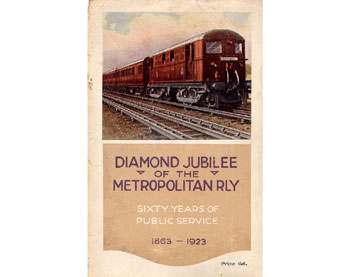Description
When the first section of the Metropolitan opened in 1863, 3.75 miles mainly in tunnels, between Bishops Road and Faringdon Street ,few would have predicted that 60 years later, it would be virtualy a small main line railway. Its tracks reached far out into Buckinghamshire, in part shared by the expresses of two great railways, the Great Central and the Great Western. The Metropolitan ran freight services right into the heart of London, on its best commuter trains it ran Pullman cars, and it even had a bosky branch line to Brill which would have delighted Heath Robinson. Although a pioneer of electrification, steam trains still ran on the outer reaches of the system, handing over their trains to the famous Metrovic electric locos “Sarah Siddons” et al, for the remainder of the journey through the tunnels. Indeed steam freight workings underground continued into the 1960s. It was heavily involved in the development of residential properties, in what came to be called “Metroland” and even became embroiled in a scheme to construct a taller rival to the Eiffel Tower at Wembley.
Most of this was due to the drive and ambition of one man (Sir) Edward Watkin, one of the most capable railway administrators of the 19th century. He was chairman of the Metropolitan from 1872 to 1894. His vision was for a line of railway under unified management from Manchester to Paris, via a Channel tunnel. To this end, as General Manager and later chairman of the Manchester, Sheffield and Lincolnshire Railway he pushed the line ever southward, while the Metropolitan pushed northwards to meet, thus eventually enabling the M S and L to become the Great Central. The Metroplolitan, connected with the East London Railway, of which Watkin was at one time chairman, and the East London joined up with the South Eastern, where Watkin also held sway. Despite his enthusiastic promotion of the scheme, the Channel tunnel would not become a reality for another hundred years.
An attractively produced booklet and useful potted history of the “Metro”.

Reviews
There are no reviews yet.